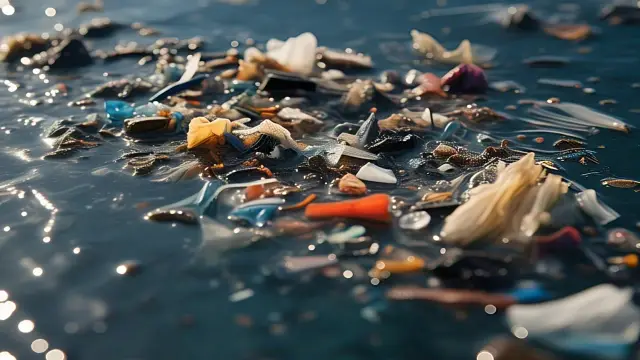Have you ever wondered what happens to that plastic bottle you toss away? It’s a question that many of us might not think about, but the truth is, our oceans are facing a silent crisis. Microplastics, tiny plastic particles less than five millimeters in size, are becoming a significant threat to marine ecosystems. They originate from various sources, including the breakdown of larger plastic debris and the shedding of synthetic fibers from clothing. But why should we care? The impact of microplastics on the ocean is profound, affecting everything from marine life to human health.
The Journey of Microplastics into Our Oceans
So, how do these minuscule particles end up in our oceans? It’s a complex journey. When we wash our clothes, tiny fibers are released into the water. These fibers, often made from polyester or nylon, are too small to be filtered out by wastewater treatment plants. Additionally, larger plastic items, like bags and bottles, break down into microplastics over time due to exposure to sunlight and saltwater. This process, known as photo-degradation, is alarming. It means that every piece of plastic ever created still exists in some form, polluting our oceans.
The Impact on Marine Life
Now, let’s talk about the real victims of this crisis: marine life. Fish, turtles, and even seabirds are ingesting microplastics, mistaking them for food. Can you imagine a fish swallowing a piece of plastic instead of a nutritious meal? This ingestion can lead to serious health issues, including malnutrition, internal injuries, and even death. Moreover, microplastics can absorb harmful chemicals from the surrounding water, which then enter the food chain. This raises an critical question: if marine animals are affected, what does that mean for us?
Human Health Concerns
You might be thinking, “I don’t eat fish, so this doesn’t affect me.” But hold on! The reality is that microplastics have made their way into our food supply. Studies have shown that seafood, particularly shellfish, can contain microplastics. When we consume these contaminated products, we’re not just eating fish; we’re also ingesting tiny bits of plastic. We need to trust that the food we eat is safe, but how can we do that when microplastics are lurking in our meals?
The Environmental Impact
The environmental impact of microplastics extends beyond marine life. They contribute to the degradation of ocean health, affecting ecosystems and biodiversity. Coral reefs, for instance, are particularly vulnerable. Microplastic’s can smother corals, blocking sunlight and hindering their growth. This is a significant concern because coral reefs are vital to marine ecosystems, providing habitat and food for countless species. If we don’t take action, we risk losing these beautiful underwater landscapes forever.
Solutions: What Can We Do?
So, what can we do about this pressing issue? It might feel overwhelming, but every little bit helps. Here are some practical steps we can take to combat microplastic pollution:
- Reduce Plastic Use: Start by minimizing your use of single-use plastics. Opt for reusable bags, bottles, and containers. It’s a small change that can make a big difference.
- Choose Natural Fibers: When shopping for clothes, consider choosing garments made from natural fibers like cotton or wool. This can help reduce the number of microplastics released during washing.
- Support Legislation: Advocate for policies that aim to reduce plastic production and improve waste management. Your voice matters, and collective action can lead to significant change.
- Participate in Cleanups: Join local beach or river cleanups. Not only do these events help remove plastic waste from our environment, but they also raise awareness about the issue.
- Educate Others: Share what you’ve learned about microplastics with friends and family. The more people know, the more we can work together to tackle this problem.
The Role of Technology and Innovation
Interestingly, technology is stepping up to address the microplastics crisis. Innovative solutions, such as advanced filtration systems in wastewater treatment plants, are being developed to capture microplastics before they enter our oceans. Additionally, researchers are exploring biodegradable alternatives to traditional plastics. Isn’t it fascinating how science can offer hope in the face of such a daunting challenge?
Conclusion: A Call to Action
In conclusion, the impact of microplastics on the ocean is a multifaceted issue that requires our immediate attention. From harming marine life to posing risks to human health, the consequences are far-reaching. But we have the power to make a difference. By reducing our plastic consumption, supporting sustainable practices, and advocating for change,

